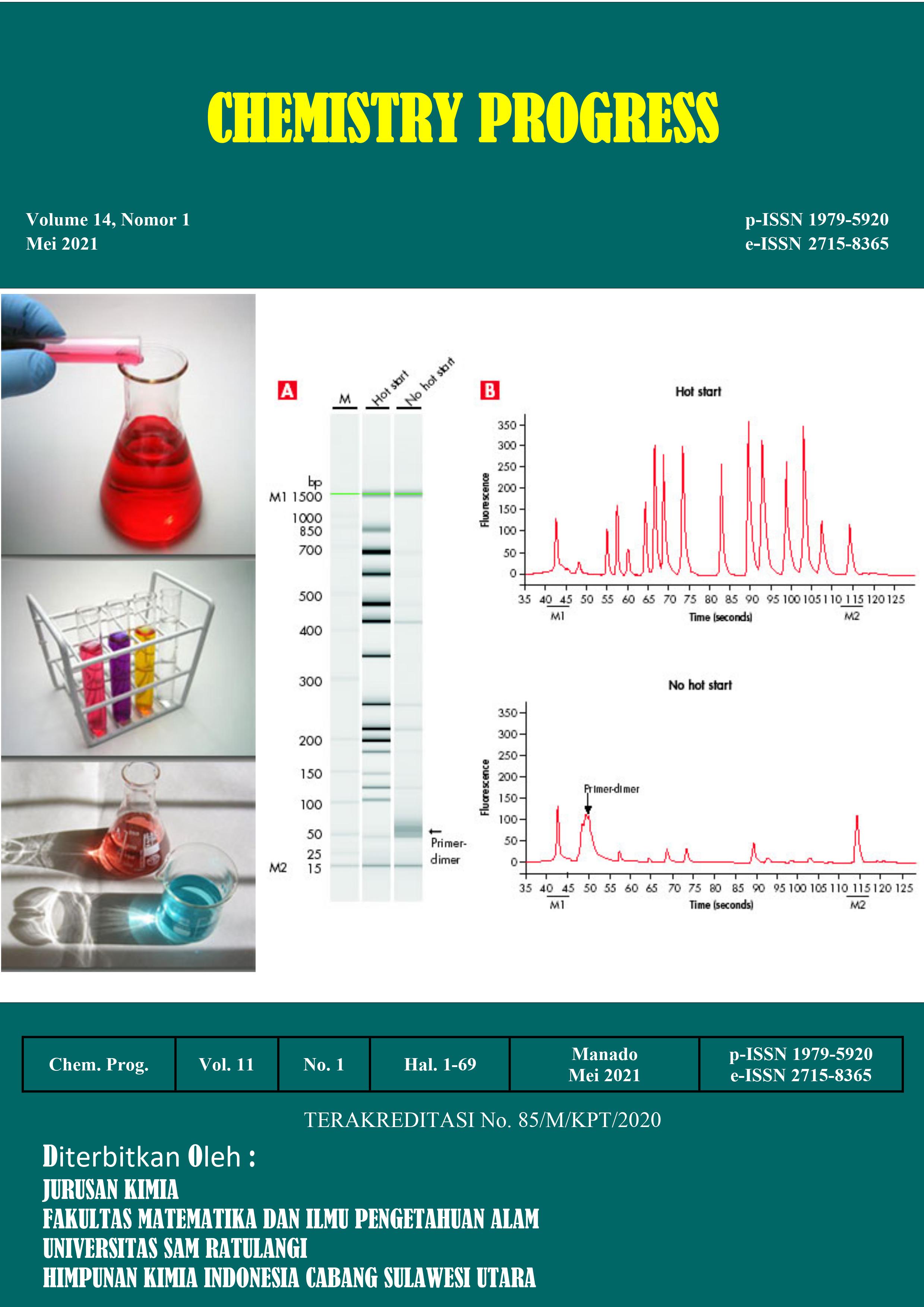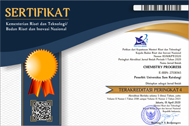IDENTIFIKASI SENYAWA BIOAKTIF EKSTRAK ETANOL BUAH PAKOBA MERAH (Syzygium sp.) SEBAGAI ANTIDIABETES DENGAN METODE TES TOLERANSI GLUKOSA PERORAL
DOI:
https://doi.org/10.35799/cp.14.2.2021.37175Abstract
Buah pakoba merah memiliki kandungan senyawa bioaktif yang dapat dimanfaatkan sebagai antidiabetes. Penelitian ini bertujuan untuk mengidentifikasi senyawa bioaktif ekstrak etanol buah pakoba merah serta uji antidiabetes ekstrak dan fraksi-fraksinya. Identifikasi senyawa bioaktif dilakukan dengan cara maserasi dan pengujian metabolit sekunder serta pemantauan pola pemisahan senyawa dengan kromatografi lapis tipis (KLT). Pengujian antidiabetes dilakukan melalui uji in vivo dengan metode tes toleransi glukosa peroral (TTGO) pada kelompok hewan uji. Hasil identifikasi menunjukkan senyawa bioaktif buah pakoba merah mengandung senyawa alkaloid, terpenoid, steroid, flavonoid, saponin dan tanin. Hasil pemantauan pola pemisahan senyawa menunjukkan pola pemisahan yang hampir sama antara Ekstrak Etanol, Fraksi n-heksan, Fraksi EtOAc dan Fraksi n-Butanol sedangkan Fraksi Air menunjukkan hampir tidak terbentuk pola pemisahan. Hasil uji antidiabetes menunjukkan bahwa ekstrak EtOH, fraksi n-heksana, fraksi EtOAc, fraksi BuOH dan fraksi H2O dengan pembanding glibenklamid memiliki kemampuan sebagai antidiabetes ditinjau dari jumlah selisih penurunan kadar glukosa darah pada kelompok hewan uji dari T30 sampai T150. Penurunan rata-rata kadar glukosa darah kelompok kontrol sebesar 55,67 mg/dL, kelompok GB 116,66 mg/dL, kelompok ekstrak EtOH 100 mg/dL, kelompok fraksi n-heksana 100 mg/dL, kelompok fraksi EtOAc 110 mg/dL, kelompok fraksi BuOH 102,67 mg/dL dan kelompok fraksi H2O 94,33 mg/dL.
ABSTRACT
Â
Pakoba merah fruit contains bioactive compounds that can be used as antidiabetic. This purpose of the research to identify bioactive compounds of the ethanol extract of pakoba merah fruit as well antidiabetic test of the extract and their fractions. Identification of bioactive compounds was carried out by maceration and secondary metabolite testing as well monitoring pattern separation of compounds using thin layer chromatography (TLC). Antidiabetic testing was carried out through an in vivo test using the oral test tolerance glucose (TTGO) method in the test animal group. The identification results showed that the bioactive compounds of pakoba merah fruit contained alkaloid, terpenoid, steroid, flavonoid, saponin and tannin. The results of monitoring pattern separation of compounds show that separation pattern was almost same between Ethanol Extract, n-hexane Fraction, EtOAc Fraction and n-Butanol Fraction while the H2O Fraction showed almost no separation pattern.The results of the antidiabetic test showed that the EtOH extract, n-hexane fraction, EtOAc fraction, BuOH fraction and H2O fraction with comparisons of glibenclamide had the ability to act as antidiabetic in terms of the difference in the decrease in blood glucose levels in the test animal groups from T30 to T150. The average decrease in blood glucose levels in the control group was 55.67 mg/dL, the GB group was 116.66 mg/dL, EtOH extract group was 100 mg/dL, the n-hexane fraction group was 100 mg/dL, EtOAc fraction group was 110 mg/dL, BuOH fraction group 102.67 mg/dL and H2O fraction group 94.33 mg/dL.













